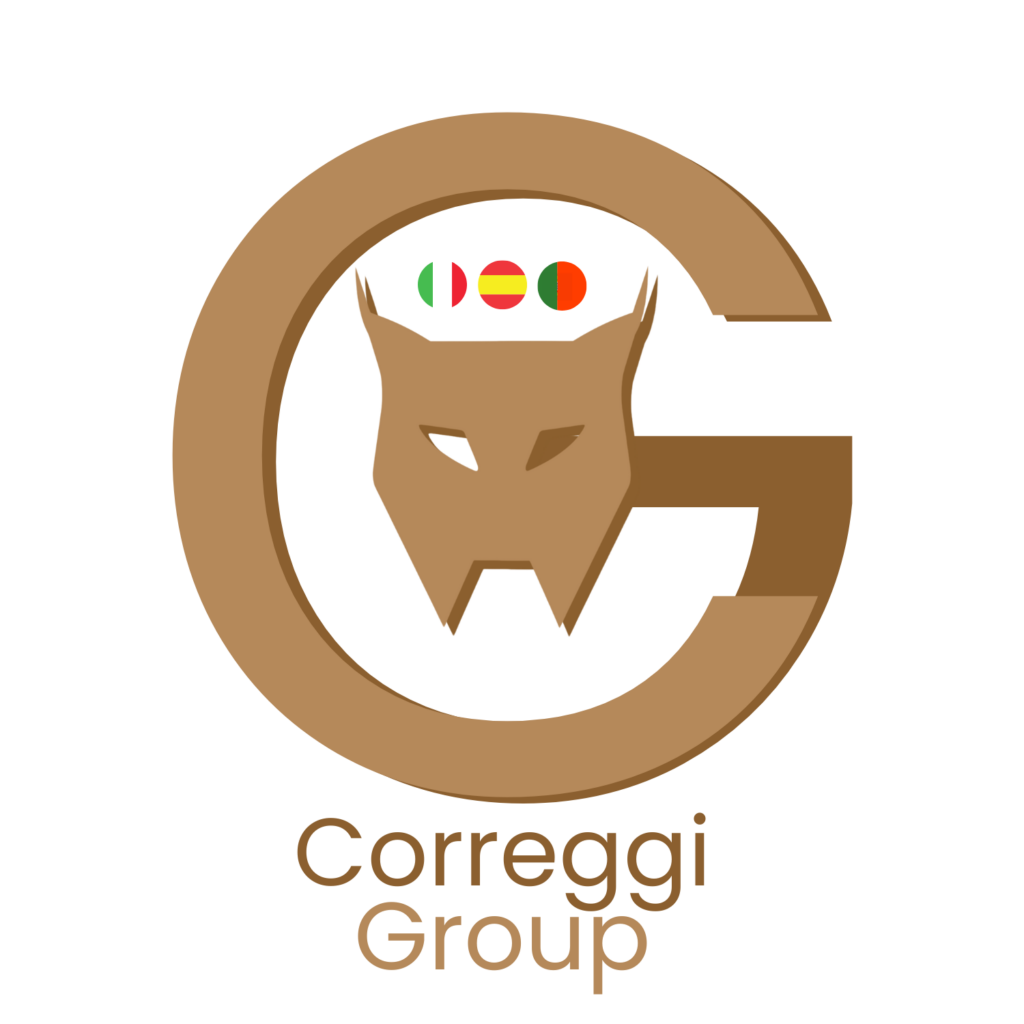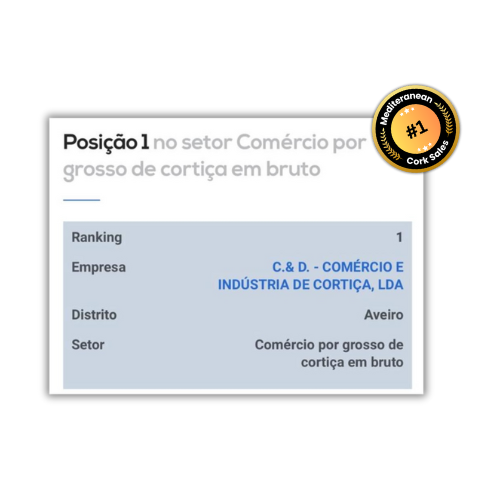The Cork Business
“Since cork is a completely natural product, CORREGGI GROUP seeks quality from the origin and only uses raw materials from the mediterranian fosrests , particularly from the forests of the Algarve, in Portugal, which has always been a privileged place for cork oak.”
Forest Planning
"Strategically nurturing forests to sustain future growth."
The Correggi Group is at the forefront of forest planning, meticulously managing cork oak forests to ensure a thriving ecosystem. Our experts employ advanced techniques to balance biodiversity preservation with productivity, ensuring that each tree is nurtured for optimal growth and sustainability. By integrating ecological assessments and community engagement, we set the foundation for a robust and sustainable cork industry.
Sustainable Extraction
"Drawing from nature’s bounty with a commitment to preservation."
At Correggi, we champion sustainable extraction practices that honor the natural lifecycle of cork trees. Our methods are meticulously designed to minimize environmental impact, extracting cork without harming the trees, allowing them to naturally regenerate. This commitment not only maintains the health of our forests but also ensures the high quality and durability of our cork products.
Transportation
"Delivering cork globally while treading lightly on Earth."
Transportation within the Correggi Group is a seamless blend of efficiency and environmental responsibility. Leveraging eco-friendly transport solutions, we ensure our cork travels with the lowest carbon footprint possible. Our strategic logistics planning helps reduce emissions, ensuring that every step of our supply chain honors our commitment to Mother Nature.
Storing
"Safeguarding the quality of cork with care and precision."
The Correggi Group’s storing facilities are state-of-the-art, designed to maintain the integrity and quality of our cork materials. Our storage processes focus on optimal conditions that preserve cork’s natural properties, ensuring that from harvesting to transformation, the material remains pristine and ready for the next stage of production.
Trading
"Empowering a sustainable future through eco-conscious trade."
In trading, the Correggi Group prides itself on transparency and mutual benefit. Our global network facilitates the exchange of high-quality cork products while adhering to sustainable practices. By prioritizing long-term partnerships and ethical trading standards, we not only broaden market access but also reinforce our commitment to eco-friendly and socially responsible commerce.
Transforming
"Innovatively crafting cork to meet modern needs while honoring its natural roots."
Transformation at Correggi is where innovation meets tradition. Utilizing cutting-edge technology, we convert raw cork into versatile, high-performance products while maintaining its natural essence. This process not only enhances the material’s unique properties but also upholds our dedication to excellence and sustainability in every product we deliver.
Since cork is a completely natural product, CORREGGI GROUP seeks quality from the origin and only uses raw materials from the Iberian Peninsula, particularly from the forests of the Algarve, in Portugal, which has always been a privileged place for cork oak. Among our clients are the most important wineries in Italy, Spain, and Portugal, as well as those in Central Europe. CORREGGI GROUP uses the best raw materials for its production, ensuring excellent quality for the end-user. A Certificate of Origin accompanies each batch, which facilitates precise and unequivocal identification of each batch of processed cork and, therefore, each individual product.
Once the bark is extracted, respecting the cork oak, the cork is left in a tubular shape to allow for aeration and drainage; subsequently, we apply our patented product ‘KIN’ to the cork to protect it (see patent page). The cork is then sent to our facilities in Portugal, Italy, Spain, and France, where the manufacturing and distribution processes begin.
- Protection of the forest and its ecology and ecosystem
- Extraction of cork
- Sale of cork stoppers and cork products
- Restoration of degraded forests through reforestation and support for natural regeneration
- Improvement of the production system and supply chain
- Recovery and recycling of cork and waste through a circular economy
- Hydrogeological protection
- Preservation of local traditions and folklore
- Conservation and development of local, national, and European labor and economy
- Protection of the rural forest landscape
- Conservation and protection of tourism and recreational activities
- Recovery of biomass from burned cork oak trees
ABOUT CORK
WHY PROTECT THE CORK WOOD CHAIN?
Cork is a raw material closely linked to the territory, as it has involved the local community for centuries in economic, environmental, and social aspects. The economy of cork encompasses numerous fields of human activity and land use; its conservation helps maintain local and national traditions, ensures local employment, especially in small urban centers, thus preventing the phenomenon of abandonment and ensuring surveillance over the territory, which directly impacts the protection from malicious and harmful events (landslides, fires, landfills, etc.). From an economic standpoint, protecting the supply chain is crucial because it plays an important role in the productive system of the various involved nations and guarantees the quality of some commercial sectors (gastronomy, wine, construction fashion, and ecology directly and indirectly). Cork should be considered as an interconnected system among the various components that characterize it, which are inseparable and interdependent: without a healthy forest’s presence, there is no future for the territory and raw material production; without a healthy sector economy, it is not possible to carry out conservation work for both the resource and the territory (roads, ditches, slopes, etc.). So, to the question: why protect the forest – the cork supply chain? the answer is obvious: why not? And above all… why hasn’t it been done yet? Indeed, observing the conservation state of the forests and the scientific data on the phenomenon that has been destroying them, known for a long time, it is clear that we are already late. Furthermore, it is crucial to remember and know that the cork oak forest grows slowly and is found in difficult environments, so the speed of intervention is critical.
ECOLOGICAL VALUE OF CORK WOOD
Cork forests represent an invaluable ecological value due to their high biodiversity, the places where they are located, and the connections they generate between the animal and plant world. In the member states of the European Union, cork oak forests are subject to protection both by national legislation through specific laws and by the creation of protected areas that include cork oaks or constitute their main element. Protection is also European through the definition of Sites of Community Interest (SCI) and Special Protection Areas (SPA). In the Natura 2000 network, cork is protected and identified with habitat codes 9330 – Quercus suber forests; 6310 – Dehesas with Quercus spp. It is protected by the European Community as one of the world’s biodiversity hotspots due to its significance.
BIODIVERSITY OF CORK WOODS
Cork oak forests are present in difficult and delicate areas characterized by a warm climate with little precipitation, therefore arid or semi-arid, where few forest species can endure. In these contexts, the presence of forest formations is rare and is associated with shrubs more resistant to the climate that often compete with cork, which, if it loses surface area due to plant death, is immediately replaced by shrubs that make new colonization difficult. In cork oak forests, there is a high plant biodiversity (an average of 20,000 plant species) expressed by the accompanying flora of the cork and growing in the shrub and herbaceous stratum represented by annual, permanent, evergreen, deciduous species typical of Mediterranean scrub and arid environments. The current European Biodiversity Strategy (EBS) has specific goals related to the protection and increase of biodiversity for the 2020-2030 decade, aiming to protect existing biodiversity, preventing its impoverishment throughout the European continent.
CLIMATE PROTECTION
The cork oak forest, like other types of forests, ensures improvement of the global climate and local microclimate, especially in the arid areas of the Mediterranean where the presence of tree cover is crucial to provide shade and cool the air. It also creates humidity and shade conditions for the soil and improves its characteristics. The role of cork is even more important than that of other woods because it grows in areas with a precariously balanced climate due to the excessively hot and arid weather. The presence of the forest and undergrowth protects the area from the risk of desertification, a very dangerous risk that triggers often irreversible degradation processes.
LANDSCAPE VALUE OF CORK WOOD
It is undoubtedly a fundamental value for the historical and cultural identity of a territory, defining its aesthetic aspect and the perception at a glance, identifying thousands of hectares of surface area. Imagine the landscape of entire countries of Spain, regions of Italy and Portugal, for which the cork oak has a typical form, has typical colors, and its aesthetic nature is also linked to the forest economy. The difference in form and colors generated during forestry uses with their seasonality is linked to both economic and aesthetic and chronological aspects. The cork oak landscape understood as a large-scale area is the visual identity of large territories and on a smaller scale draws the identity of tree-lined hamlets linked to the landscape of human settlements and rural activities, constituting the identity character of towns and villages, which has marked their economic and cultural aspects for hundreds of years. The landscape of these forests is very varied because it depends on the multiple factors that influence its appearance, operated by both humans and nature. A cork oak forest can have different ages and different intensities of wood cover: it can have a sparse forest with secular trees, or a mixed forest with different ages, a mixed forest with other tree species. These factors add orography, topography, the presence or absence of rocky ridges or large stones, soil color, exposure, etc. When thinking of a cork oak at a European level, one should think of a high variability of appearance and characterization of these places as forest management and nature intertwine with other anthropic activities. There is talk of dozens of types of visual and perceptual aspects at both a large and small scale. The loss of the cork landscape leads to a simple and “trivialized” landscape characterized by low shrubs or arid grasslands. It is easy to understand that aesthetic damage can be so closely related to invaluable economic and ecological damage.
A study conducted in Sardegna (Italy) attributed to the landscape value of cork oak forests an economic value ranging from 2,900 to 6,400 million euros—about €30,000-€70,000/hectare. This value is very high because it cannot be bought and is tied to the perception that the population has of the territory and the desire to protect it.
CULTURAL VALUE OF CORK WOOD
The cultivation of cork has been lost in history, known by the Egyptians and Phoenicians who used it in Sardinia. Thus, all aspects described in the previous paragraphs converge on the cultural aspect as the presence of the cork oak remains firmly tied to the identity of a territory, embracing the customs and traditions of numerous small towns and villages located in all European countries. In these sites, the link between citizenry and the cork economy is very strong, an ancestral bond that has allowed in the past the flourishing development of a healthy economy linked to the local territory, today we’d call it “zero kilometers.” As also occurs in other culinary and wine-making traditions, thanks to cork, local traditions and folklore have been created, often capable of developing multifunctional exchange between different communities located in well-removed areas. In small towns where cork is the main economy, it is also possible to smell it during processing periods, like the boiling of cork, just like the smell of must during the grape harvest for winemaking. Cork is, therefore, a visual, perceptive, olfactory, auditory culture…

Correggi Group
Menu
#1 in Mediterranean Sales

Correggi Group® – All Rights Reserved – 2025
Developed by Honly high IQ
